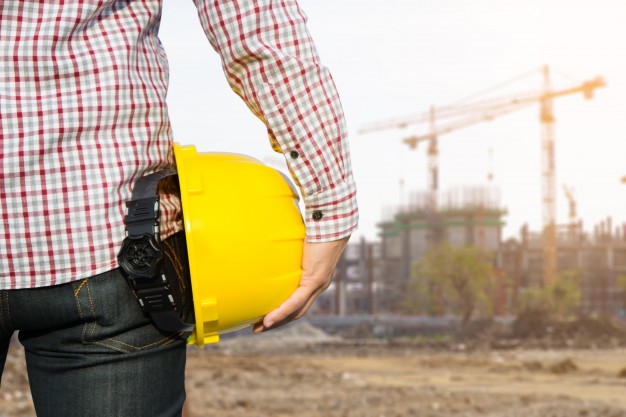While the ideal workplace for employees should be free of safety and health hazards, there are certain work operations where exposure to hazardous chemical and physical agents can’t be avoided. However, it doesn’t mean that these workers should be left to work unprotected.
Depending on the type of exposure, the nature of the substance, and route of entry to the body, control measures should be implemented to avoid any harm to your employees. There are plenty of Personal Protective Equipment (PPE) should be available to protect against these risks at work but here are some of the must-have for every establishment.
Head Protection
Head injuries are one of the most severe injuries a person could sustain in the workplace. Unfortunately, it’s also one of the most common. An employee can always experience a head injury in the workplace especially if the work environment is poorly maintained.
There are plenty of ways that an employee could suffer from a head injury. It could happen from walking into solid objects which might lead to bumping their head.
Accidents from slipping and tripping are the second most common cause of worker injury. If your employee slips on a wet floor or trip on an object, they might sustain damage when they hit their head. A falling object dropping from above could also harm a worker when it hits them on the head.
There could be internal and external effects of this kind of injury. The workers might experience minor to severe damage to their skulls, with bruising and swelling most likely to occur. There might be cuts or lacerations on their scalp, or their bones might get fractured.
These external injuries might lead to the victim experiencing symptoms including dizziness, memory loss, and nausea. At worse, the head injury would be severe enough to lead to a seizure.
It could also affect their head internally. The injuries they sustain may fracture their skulls, and it may lead to lead to blood clots forming in the brain. Other fatal internal injuries such as wounds, bruising to the brain, hemorrhaging, or bleeding in the brain may also occur.
It’s important for establishments to have protective hats for head protection against impact. It should be able to withstand penetration and absorb the shock of a blow. Different types and class of head protection against different hazardous conditions. Your choice of head protection should depend on what your establishment needs.
Protective Shoes
Work-related foot injuries can be classified into two categories. The first category includes foot injuries from crushing, sprains and punctures. The second group of injuries consists of those resulting from slips, trips, and falls. It’s not always slipping and falling that could always lead to foot injuries, but the lack of attention to proper foot safety can result in their occurrence as well.
In selected occupations, those who suffered foot injuries don’t usually wear protective footwear. Proper protective footwear during your work can prevent workplace injuries especially when they’re in areas where there is a risk of receiving foot injuries due to falling, or rolling objects, or objects that can pierce the sole and where employee’s feet are exposed to electrical hazards.
Foot injuries can be a hassle since it may result in your employees taking time away from work or difficulty performing a job which is why establishments should encourage their employees to wear safety shoes or boots to prevent many foot injuries.
Besides appropriate footguards such as safety shoes or boots, leg protection by wearing leggings should be done to protect their lower leg and feet from molten metal or welding sparks.
Foot and leg protection aren’t just protection from physical dangers in the workplace. Workers who have to stand all day on hard surfaces like concrete makes the muscles in the feet, legs, back, and other parts of the body grow tired quickly. Without any appropriate footwear, their fatigue could become worse.
Wearing protective shoes with adequate cushioning and arch support can give comfort and alleviate the strain on muscles. Employees will be less fatigued and become more alert, and as such, they’d be able to do their jobs more efficiently and of course, more safely.
Arm and Hand Protection
Hand and arm protection are required in the workplace where there’s a risk of injury from potential hazards to the hands and arms including cuts/punctures, burns, chemicals, electrical shock, human blood or body fluids.
There is a wide assortment of gloves, gauntlets, hand pads, cuffs, mitts, armlets, and elbow protectors available to protect your staff from these hazards. This protective equipment also includes gloves, finger guards and arm coverings. Since one type of equipment wouldn’t provide protection in every condition, you have to make sure that you have the appropriate one for the job.
Respirators
In environments with either insufficient oxygen or harmful dust, fogs, smokes, mists, fumes, gases, vapors, or sprays are present, inhalation can expose them from these materials which could cause serious health issues such as cancer, lung impairment and other diseases that might lead to death.
Engineering controls wouldn’t always be adequate to reduce or eliminate them so when these toxic substances are still present in the workplace, it’s essential to have respiratory protection ready to use.
While on-the-job injuries occur from time to time, but a lot of people who work in high-risk professions often tend not to take safety seriously enough. Some businesses don’t use safety equipment for budget issues while others decide that it’s faster and easier to work without safety equipment.



